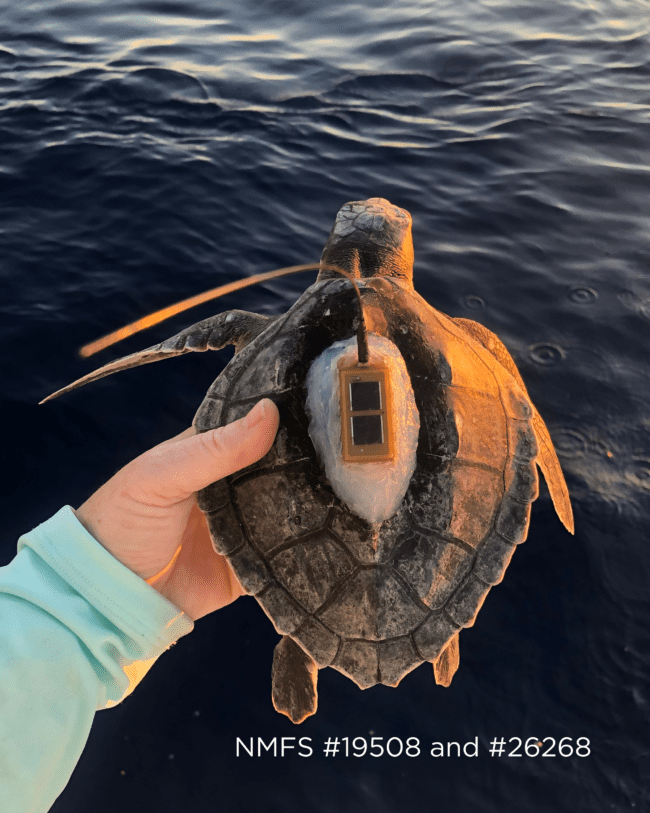Juvenile sea turtles are active swimmers! Video via EarthSky.
Scientists have long thought that young sea turtles – after hatching on the shore and making their way into the ocean – drifted passively on currents. But the University of Florida said on February 6, 2025, that these juvenile sea turtles might be active swimmers. A team of scientists tracked four species of juvenile turtles from the Gulf of Mexico and discovered they can actively swim and control their position.
This life stage from terrestrial to oceanic habitat marks a critical transition in their life cycle that has not received much study. Co-author Kate Mansfield of the University of Central Florida said:
Historically, all our information about this young life stage has been limited to opportunistic sightings of these little, hard-to-see animals from boats passing by, tracking work on hatchlings in the first 24 hours after leaving nesting beaches or laboratory studies.
The scientists’ new findings will help guide future conservation efforts. They published their study in the peer-reviewed journal The Royal Society on February 5, 2025.
Tracking sea turtles
Biology researchers from the Marine Turtle Research Group at the University of Central Florida’s College of Science tagged and tracked the movements of four species of juvenile sea turtles. Altogether, they studied a total of 131 individuals: 94 green turtles, 28 Kemp’s ridleys, five loggerheads and four hawksbills.
The team of researchers used satellite-equipped, solar-powered platform transmitter terminals. These miniature tags use GPS to track the sea turtles. In addition, the researchers compared the sea turtles’ movements to those of floating buoys that record the conditions in the ocean.
This study is the largest to use satellite tracking of the behavior of wild-caught juvenile sea turtles from the Gulf of Mexico from 2011 to 2022.
From the shore to the deep ocean
Until now, scientists believed that when the eggs hatch on the beach, the young turtles head out into the deeper ocean, where they drift with ocean currents. To be sure, taking refuge in the deeper ocean helps these small, vulnerable animals avoid predators such as birds, sharks and other fish, which spend more time near the coast.
However, the scientists discovered the movements of the tagged turtles were not what they expected. Lead author Katrina Phillips of the University of Central Florida said:
One of the longstanding assumptions is that juvenile sea turtles stay far offshore. Researchers call this the ‘oceanic life stage,’ which means off the continental shelf in waters deeper than 200 meters. However, what we found was that the turtles in this life stage are crossing over the continental shelf into neritic [shallow] zones a lot more than we expected.
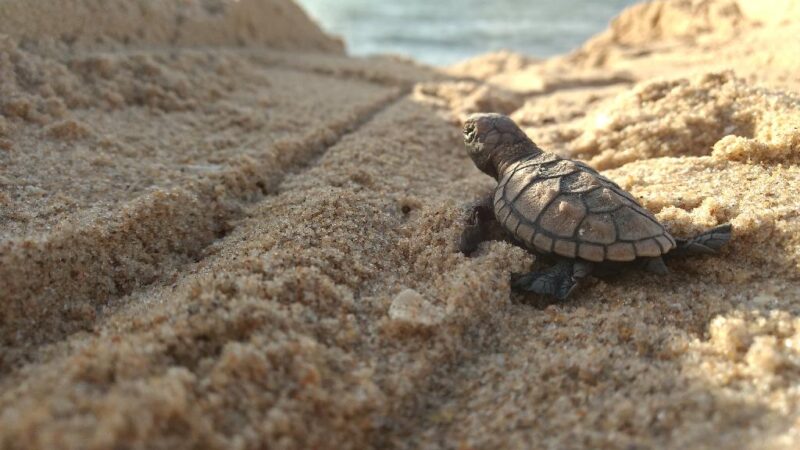
Showing up in shallow waters
The neritic zone is the shallow area closest to shore. It sits atop the continental shelf, before this gently sloping underwater area drops off into the deep ocean. Here, the majority of marine life lives in the neritic zone because of the nutrients found.
The study found the tagged sea turtles were crossing into this shallower area. They weren’t doing so as a transition to their next life stage, however. Instead, the turtles sometimes came onto shallower areas near shore and then turned back to avoid it. Phillips said:
That was interesting because we had these passive drifters that we released with them and many of them washed up shore and none of the turtles did.
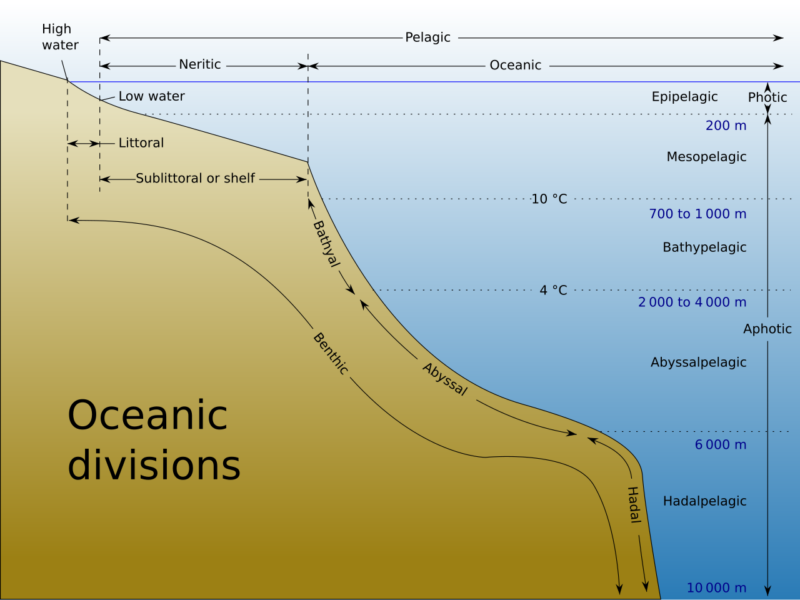
Why is it important to know how sea turtles move?
The new results challenge previous thinking about the early life stage of most sea turtle species. In addition, these findings provide important data to assess the risks of human activity and improve conservation efforts. Mansfield said:
The Deepwater Horizon oil spill in 2010 was a bit of the origin story of this project. If we have another oil spill, we need to know whether these animals will be transient through an area, stuck there due to currents or if they’ll end up somewhere else.
On the other hand, it is important to study more species of turtles. Phillips commented:
I think it’s important to get data from different places and put the puzzle together to get a bigger picture of what’s going on. Now that turtles are tracked from more places, we are finding that there are more nuances to what goes on.
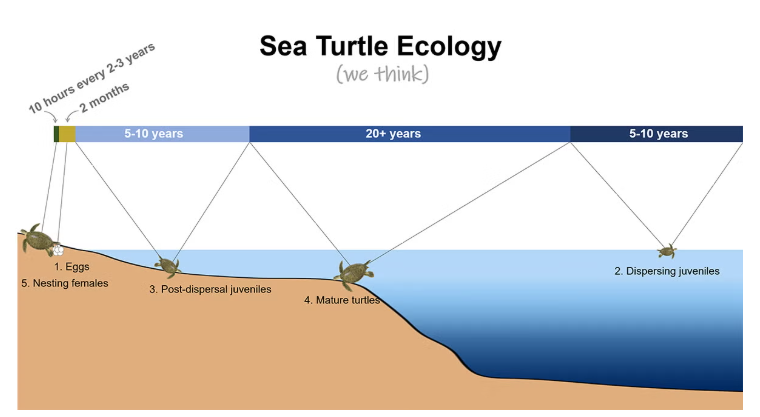
What can we do for the sea turtles?
The results of this study are already driving conservation efforts, including a proposal for critical habitat designation under the Endangered Species Act for green sea turtles. Previous research by Mansfield helped established critical habitat for loggerheads: the sargassum algae nursery.
Mansfield and Phillips say if we assume these animals are strictly oceanic, then we might not be fully protecting them or addressing what they need for eventual recovery. According to Mansfield:
If sea turtles are occurring on the continental shelf, we suggest renaming this life stage to ‘dispersal stage’ to account for their behavior. This is important nuance in their life history, and the new terminology reflects a better understanding of sea turtle behavior, revealing more about these lost years.
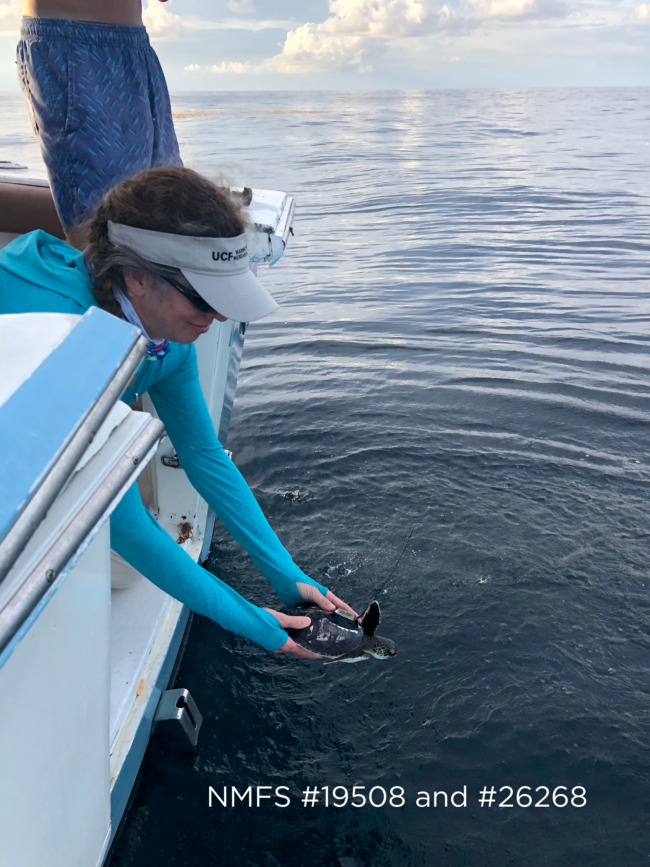
Advances in technology
Although monitoring sea turtles can be expensive, labor intensive and the technology has limitations, advances in technology are paying off. Mansfield said:
It’s really hard to follow and manually track a little turtle over time. You have to fuel a boat with researchers who have a strong stomach to go into the ocean. Historically, technology just wasn’t there to put a tag on a turtle and use satellites to be able to remotely track where they went. Tags were battery powered and as big as a brick.
Fortunately, Mansfield discovered a method to safely tag and effectively track small turtles. And the information these little turtles provided will go toward helping all sea turtles have a safer future.
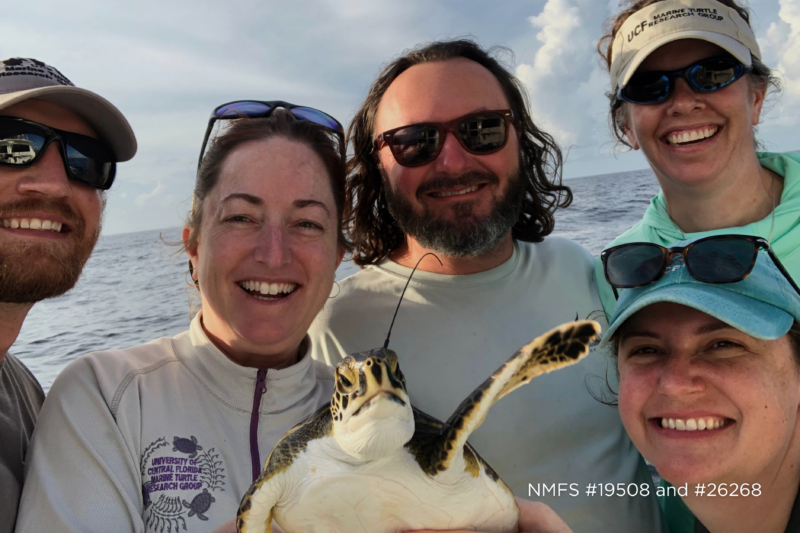
Bottom line: For a long time, scientists thought most juvenile sea turtle species lived in the deep ocean and drifted passively on currents. A new study used miniature trackers to find they might be active swimmers, occasionally coming closer to shore where more dangers exist.
Source: The Royal Society: New insights on sea turtle behaviour during the ‘lost years’
Via University of Central Florida
Read more: Sea turtles are as old as dinosaurs: Lifeform of the week
Source link
Read More
Visit Our Site
Read our previous article: New method to cryopreserve drone semen
